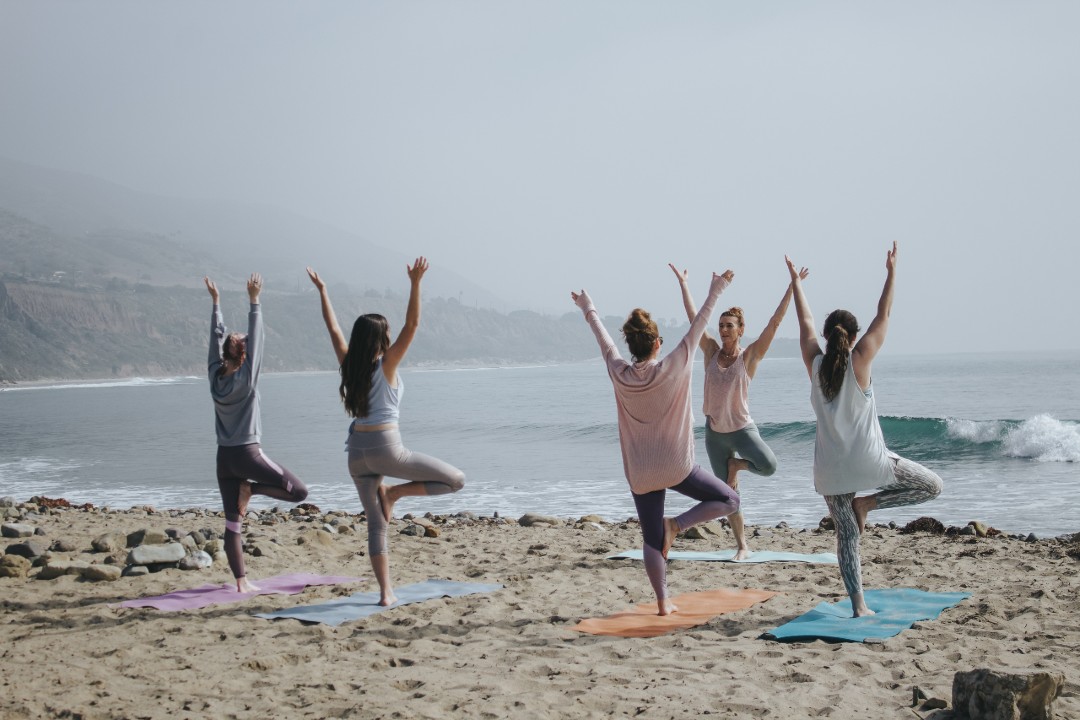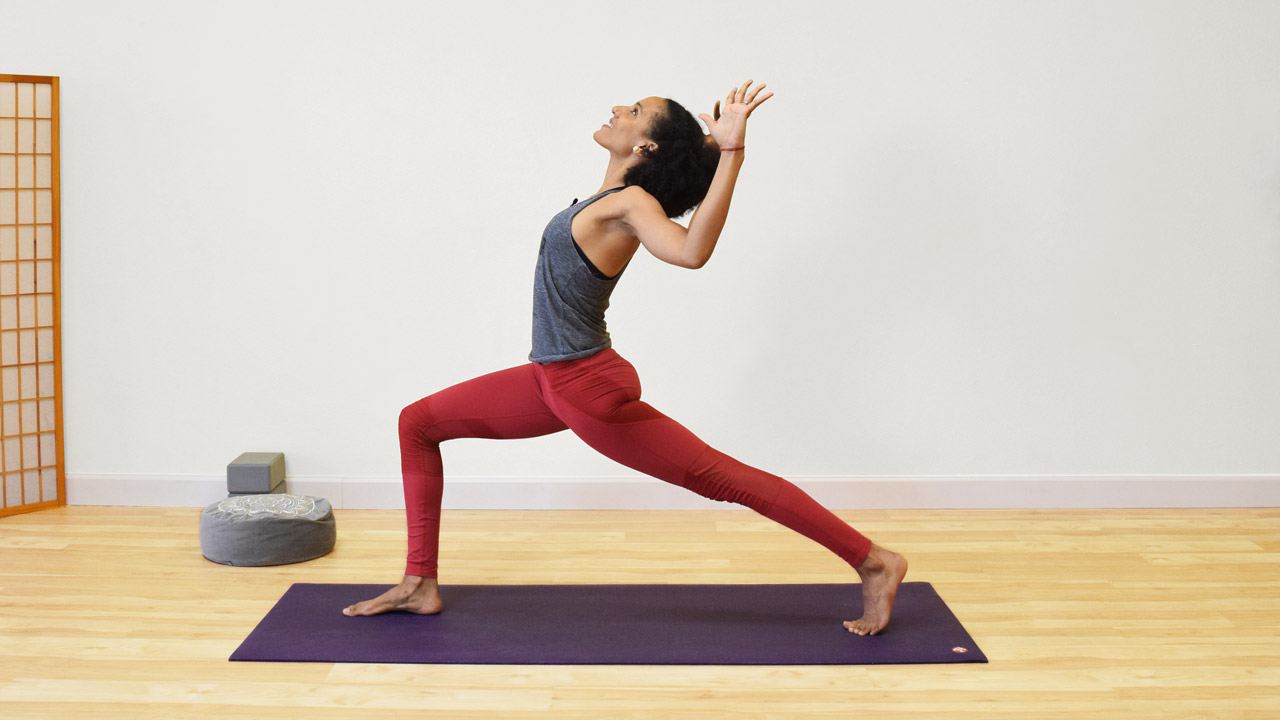As a former figure skater and lover of choreography, it was perhaps unsurprising that, once I began teaching yoga about a decade ago, sequencing and theming were two aspects that really intrigued me. I loved taking other teachers’ classes, adapting their sequences to my body, mood, or to those of my students. Spending time time on my mat at home, exploring different postures and transitions, was the most effective way for me to practice. I began to be more mindful of my language, my cadence, and the overall experience that I was trying to offer anyone who came to one of my classes.
As my teaching has evolved and I continue to deepen my knowledge of yoga, I’ve found that there are certain principles that helped inspire me to write and teach sequences that are creative, accessible to most, and impactful to my students’ (and my own) practice. Read to find out some of my favourites; I hope they inspire you too.
Why is theming important?
Theming is the golden thread that weaves the poses, the breath, and the experience together. It is what allows students to become so connected to their practice and themselves, that for 90 minutes they can feel truly present.
Part of the process of creating a yoga class is deciding where your focus will lie and how you’d like to leave your students feeling after practice. If theming is not something that comes naturally to you, that’s okay! Connect to your teaching community and find support in other teachers that have found a way that works for them and are open to sharing and exchanging ideas with you.
Consider the ‘why’
Theming your yoga classes can be as simple or as complex as you want it to be. When taking a more simplistic approach to theming, begin by considering the “why”.
- Why did I write or choose a particular asana sequence?
- Why do I want to share this with my students? How does it benefit them?
Asking the why is the first step to allowing the theme to ‘reveal itself’. Taking a few moments to understand why you are teaching what you are teaching and how it will be a beneficial tool to the people who attend your class, will allow you to identify patterns that, paired with the right dharma, the right mood, and the right words, can create transformative classes.
You can change your theme for each class you teach. You can also change your theme weekly, monthly, on a quarterly basis, depending on how much you want to expand each subject or theme. Consider theming an integral part of your own learning, because the opportunity for research and inquiry will certainly arise.
Theming your classes by a specific calendar
Choosing a calendar model that resonates with you or that you would like to explore is a great way to organise yourself and theme your classes more easily.
Calendar models can be based on:
- The four seasons (could be a more Ayurvedic approach)
- The zodiac/horoscope
- The phases of the moon
- Main holidays and special dates in your culture
- Equinoxes and solstices (also could be with an Ayurvedic approach)
- Threads that you can easily connect through your classes, workshops, and retreats, that evolve with significant dates
Theming your classes using music
Another wonderful exploration of theming is connecting your classes with your playlists. I like to choose meaningful music and lyrics that connect to the feeling that I am trying to create, the energy that I intend to invoke through certain genres and authors.
You could use a line from a song, a poem or a short piece of writing to inspire your theme. “Everything is Everything” by Lauryn Hill has inspired a few of my yoga classes.
A music flow with Laia – Energy expansion
This is an energetic practice intended to awaken the body and mind. It will get your blood pumping and help sweep away the cobwebs if you’re feeling restless. The playlist created for this class threads the physical practice, the breath, and the music together in order to help you feel energised and expansive.
Theming your classes using layers
Yoga has many layers and ways through which it can be explored. I believe that more and more people are embracing the origins and the roots of yoga and are learning that physical practice is a small part of what yoga can be.
When theming your class, you can consider a few of these elements that, individually or combined, can make for a well-rounded theme:
- The style of yoga (i.e. Hatha, Vinyasa, gentle, power, yin, etc.)
- The choice of asanas (Which poses am I using in my sequence?)
- Yogic philosophy (Will I speak on any aspect of philosophy related to traditional texts?)
- Breathwork (Will I include any pranayama in my class, and how will I introduce it?)
- Mudras (Will I include any mudras and to what purpose?)
- Mantras (Will I include any chanting or mantras and to what purpose?)
Theming classes focusing on a specific aspect of yoga
You can choose to focus on certain physical aspects of yoga for your ‘fitness-oriented’ folks, such as:
- Heart-opening: Focus cueing on enhancing front body opening and emotional release.
- Core strengthening: Place your attention on postures that strengthen and promote core stability.
- Hip-opening: Focus on creating space in the lower body and releasing tension in lower back, hips, and legs.
- Balance and concentration: Explore balancing postures that require presence and concentration to promote the same stability off the mat.
If you’re drawn to the spiritual and energetic aspects of yoga and would like to share it with your students, here are a few theme ideas:
- Chakra balancing: Explore each chakra through a specific length of time utilizing different yoga resources like certain postures, breathwork, mantras, etc., as well as utilizing meditation and visualization.
- Grounding: This is done through a sequence and language that encourages students to connect to the Earth, to themselves, and to the full class experience.
- Koshas exploration: For more advanced students, exploring the 5 sheaths of existence may be a wonderful way to deepen their practice.
- Energizing: Get people moving through a sequence that is intelligent and fun with space for breath and self-inquiry leaving them refreshed and feeling empowered.
Theming classes through dharma
Theming through dharma is one of my favorite ways to explore theming for yoga classes since the possibilities are limitless. I find myself theming classes this way when I am reading a book that is impacting my belief systems and how interact with the world.
Some of the books that I highly recommend are:
- The Book of Joy by Desmond Tutu
- The Untethered Soul by Michael Alan Singer
- Go In and In by Dana Faulds
It is also important to draw from your own experiences. Always set a healthy boundary of how much you want to share about your personal and private life. But consider that certain epiphanies that you may have had (while sitting in traffic, etc.) can be a great point of inquiry for yourself and your class.
This way of theming your classes requires a good amount of self-exploration, so I would encourage some journaling. Learn what inspires you and bring it into your classes in bite-sized pieces.
Efficiency and flexibility
Being a yoga teacher is a wonderful thing but it can also be exhausting. One of the main reasons to theme your yoga classes is to be more efficient with your planning. So, however you choose to theme your classes (if you choose to do so) always make sure that you choose a method that is sustainable and that will reduce, not add, stress in your life.
Try to remain flexible and adapt to what is necessary at any given moment. You can plan and theme your class to the nth degree but you should also be ready and willing to readjust according to the bodies and the energy that present themselves in class.
But in the end…
Keep in mind that you do not always need to be inspiring. You not always need to have something magnificent and life-changing to say. Know that, at times, with the hectic lives we tend to live, you might barely make it to class on time and teach a simple Hatha class focused on the breath. That is still a great class.
If you want to remain creative and inspired, make time in your life to play and have fun, and connect with other teachers and mentors to create a support system and ultimately, your yoga family.
The EkhartYoga community is a great place to start!
Main image courtesy of Kaylee Garrett on Unsplash
Related
- Self care for yoga teachers
- 3 pieces of advice for yoga teachers from Leslie Kaminoff
- Communication tips for yoga teachers returning to studios


